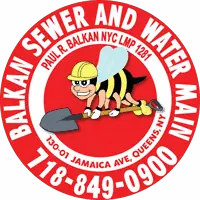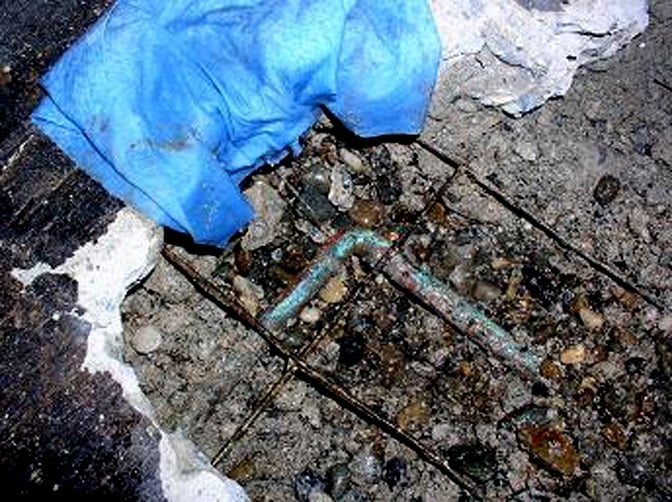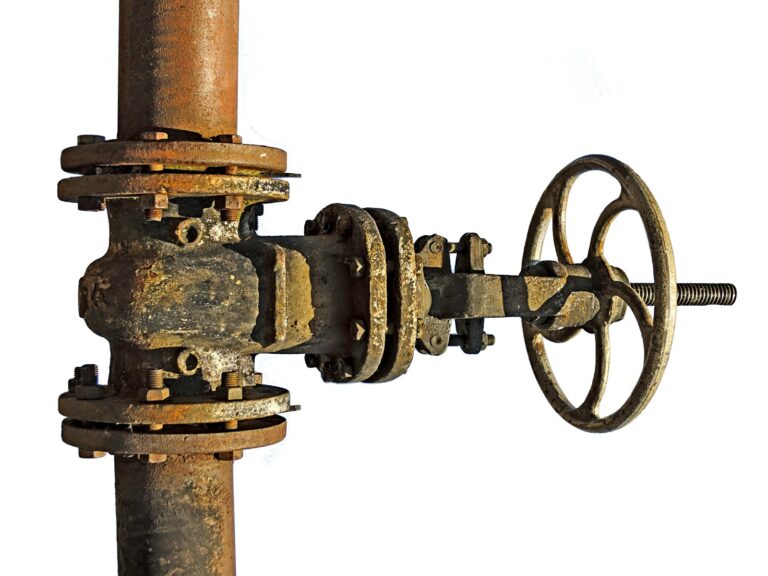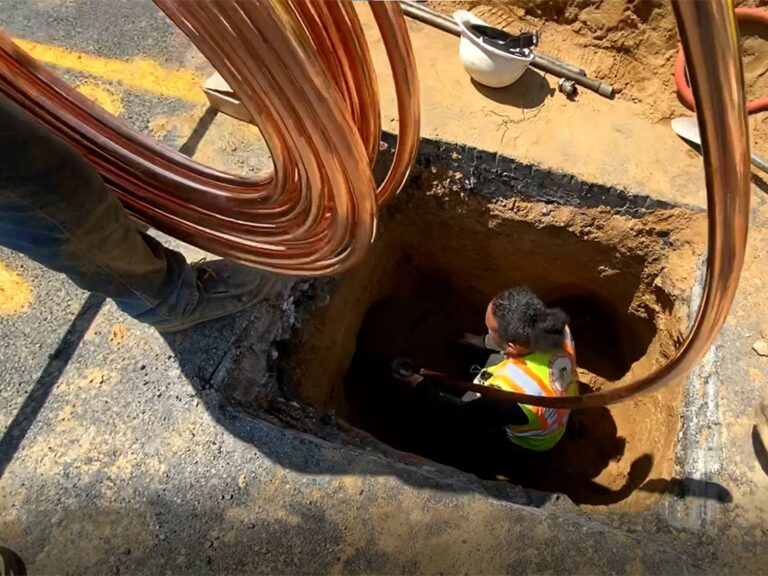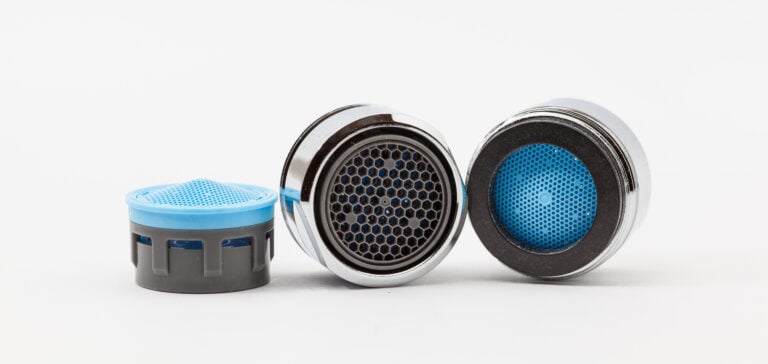Accurately determining if you have a water line leak requires no special tools or equipment. But it does require care and a step-by-step process. A homeowner can perform the test themselves with some guidance. But in most cases calling both a licensed plumber and your local water authority is usually the best bet. And typically you will incur little or no cost.
A water line leak can add substantially to your water bill. So understanding how to determine if you have a leak, and perform a leak test, is good to know. What follows is a commonsense and easy to follow guide on how to check for various types of water leaks.
The 1st Step To Check If You Have A Water Line Leak
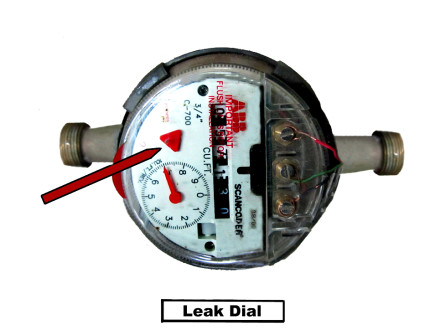
Almost all houses in NYC now have a water meter. The meter is connected just on the house side of the main control valve for the service line from the street. The water service line will be the largest fresh water pipe inside the house, and have a ground clamp for the electrical supply for the house attached to it. There should not be any electricity flowing through the electric ground wire attached to your water service line. It is designed to act as a backup for the main electrical ground.
Each water meter is designed a little bit differently. But on the top of the meter is typically a dial. There are various indicators that move or spin when water is being used. The smallest of these dials is referred to as a ‘leak dial’. If no water is being used in the house this dial and none of the other dials should be moving. If all the water is turned off in the house and the dial on the meter is still moving then you have some sort of a water leak inside the house.
How To Check If The Main Water Line Is Leaking
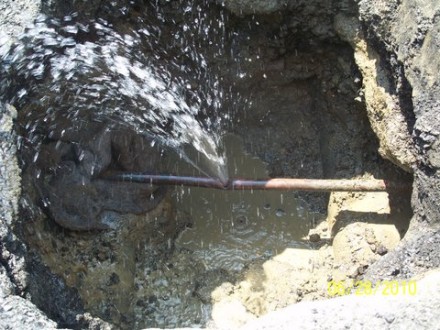
Frequently the 1st sign of a water main leak is not a drop in pressure, or water gushing up from the ground. In most cases the 1st sign of a water line leak is a rumbling sound on the pipes inside your house. This is typically most noticeable at night when the house is quiet. Here are the three basic steps to check for a water line leak:
1. The first step involves closing the main control valve: To properly check for a leak on the main service line is to gently close the main control valve on the house side of the water meter. Always close the main control valve closest to the inside of the house, not the street side valve. That way if it breaks, you can still shut the water using the other valve, and repair it.
2. The second step involves draining down the plumbing system: Drain down the plumbing inside the house by opening a plumbing fixture on the top floor and the lowest floor or basement.This is done to ensure that no residual water is running inside a toilet tank or from an underground pipe inside or under the house. Residual water would also make a sound on the pipes inside the house. This can confuse the source of the water leak.

3. The third step involves “sounding out” for a leak: To check for a main water line leak is to listen to the line as close to the point where it exits the house as possible. Ideally you should place your ear directly on the water main. If that is not possible get a small metal rod or screwdriver and place one end on the main water line and the other end on your ear.
Please note: There are specialty listening devices available, some are quite simple, others are very intricate and expensive. However, listening devices are are typically not necessary. If you think there is a chance you have a slight or undetected leak, you may be better to call a professional who has more experience in leak detection.
If no water is present or running inside the house plumbing there should be absolutely no sound on the water line itself. Any sound on the water line would indicate that the main water line is leaking outside the house.
Checking For A ‘Running’ Toilet

There are two simple ways to check to see if a toilet is ‘running’. With no other plumbing fixtures running inside the house see if your water meter dial is ‘spinning’. Then close the valve under the toilet tank and see if the meter dial stops moving. If the meter dial stops moving you have a leaking and running toilet – you have found the problem.
The 2nd way to check for a ‘running’ toilet is to place a small amount of food or clothing dye inside the toilet tank. After waiting about 10 minutes or so look in the toilet bowl and see if there is sign of the dye. If you see dye present you have a ‘running’ and defective toilet.
A running toilet frequently is audible and annoying. But it is also very costly – and even more annoying when you get your next water bill!
Signs Of A Water Line Leak Under Your Floor Or Slab
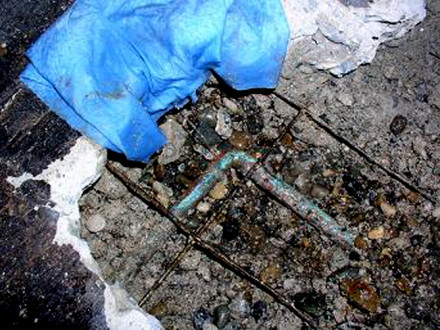
Leaks under a slab or basement floor are perhaps the most difficult to detect. Because they are usually not visible they are frequently misdiagnosed with resulting incorrect work orders and unnecessary aggravation. Testing for leak under a floor begins with some of the same steps mentioned above.
- The 1st step is to see if your meter dial is spinning even though no water is being used inside the house. If it is proceed to the 2nd step.
- The 2nd step as described above is to make sure you do not have a running toilet.
- The 3rd step is to close the main control valve for the main water line as described above.
- Then drain out the house plumbing as described above.
- Lastly listen to the water main after waiting at least 10 minutes.
The reason the sound steadily decreases is that the residual water in the house plumbing is slowly leaking out of the broken pipe under the floor. By taking the various steps described you have eliminated other possible sources of the leak such as a toilet or water main service line. If the main water line was leaking the sound on the piping would not go away, it would remain steady.If you hear a sound of running water that steadily decreases, then disappears after you close the main control valve, it is likely that the leak is from a pipe under the floor or slab.
Testing For A House Sewer Leak
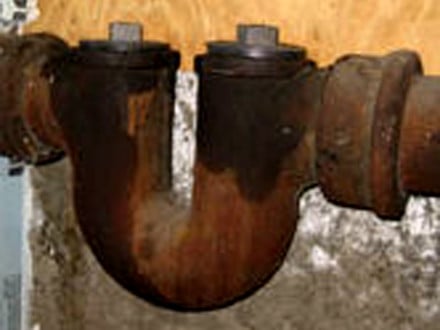
In some cases a leaking sewer joint can be mistaken for a leaking main water line. This can occur if the house sewer is in close proximity to the house water service line, and is also located above the finished grade of the basement floor. This is referred to in the trade as a “hung sewer”.
A leaking sewer joint near the outside of the foundation wall can result in water being present on the basement floor. Many times this type of sewer leak can look just like a water main break.
A definitive way to test for a sewer line leak outside the foundation wall is to do a sewer dye test. A sewer dye test is performed by removing the cap from the house side of the sewer trap (click this link to learn about a sewer trap and the proper way to open it). Then place some food or clothing dye into the open sewer trap. The next step is to flush a toilet or run a sink for a few minutes to force the dye down the house sewer. After waiting for no more than an hour if the source of the water leak is from the house sewer the dye will be visible on the basement floor or foundation wall.
Have A Further Inquiry Or Question?
Any questions or inquiries concerning any type of water main repair or sewer repair issue will be quickly addressed when you contact Balkan Sewer And Water Main. Balkan is dedicated to servicing and educating property owners when sewer and water main issues arise. Balkan Sewer And Water Main Service has been in continuous operation under the same trusted family name for well over 60 years.
No-obligation written estimates and free site visits are available day and night, seven days a week.
About Balkan Sewer & Water Main Service

Balkan Sewer And Water Main is the largest and most trusted sewer & water main replacement company in NYC. We are licensed, bonded, and insured. As a family run business in continuous operation for over 60 years. Our 10 year unconditional guarantee on replacements means piece of mind for our valued customers. We are uniquely prepared to serve you due to our 48,000 square foot facility, fleet of trucks, heavy moving equipment, backhoes and pneumatics.
Choose Balkan Sewer And Water Main for your next sewer repair, water main installation, water repair, water line leaks, to correct a violation, sewer replacement, water line replacement, sewer trap, backwater valve, hydrants, manholes, specialty water main work, area drain, and trench drains.
